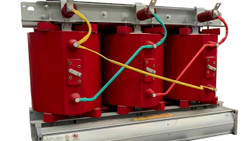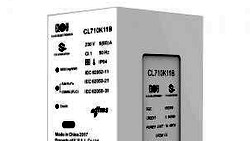In an era of advancing technology, utilities worldwide are considering the transition from traditional Ferraris meters to smart meters. This shift offers numerous benefits, including improved accuracy, enhanced data insights, and increased operational efficiency. In this article, we will provide decision-makers in utilities with a comprehensive guide to navigate this transition and make informed choices for their metering infrastructure.
Assessing the Current Metering System
- Evaluate the accuracy and reliability of your existing Ferraris metering system, considering factors such as calibration, drift, and potential measurement errors.
- Assess the maintenance requirements and costs associated with Ferraris meters, including periodic inspections and replacements.
- Consider the frequency of data collection from Ferraris meters and evaluate if it aligns with your utility's operational needs.

(symbol image, credit CLOU/Clipdrop)
Upgrading the Meter Test Laboratory
- Evaluate the capabilities of your existing meter test laboratory and assess its readiness to test and certify smart meters.
- Identify any gaps or required upgrades in the laboratory infrastructure, equipment, and personnel skills to accommodate the testing needs of smart meters.
- Consider partnering with accredited testing laboratories or engaging expert consultants to ensure compliance with regulatory standards and accurate meter testing.
Conducting a Comprehensive Cost-Benefit Analysis
- Evaluate the initial investment costs of deploying smart meters, including procurement, installation, and integration expenses.
- Assess the potential operational savings that smart meters can offer, such as reduced meter reading costs, streamlined billing processes, and improved outage management.
- Consider the long-term maintenance costs of smart meters compared to Ferraris meters, including firmware updates and potential battery replacements.
- Explore potential revenue gains from accurate metering, reduced energy theft, and improved customer satisfaction.
- Investigate funding options and incentives available for smart meter deployments, such as government grants or programs aimed at promoting energy efficiency.
Ensuring Integration and Compatibility
- Evaluate the compatibility of smart meters with your existing infrastructure, such as communication networks, data management systems, and billing platforms.
- Consider the scalability of the chosen smart metering solution to accommodate future growth and increasing data volumes.
- Assess the potential challenges and requirements for integrating smart meter data into your existing systems, including meter data management and customer information systems.
- Engage with technology providers and system integrators to ensure a seamless transition and address any integration complexities.
Prioritizing Data Privacy and Security
- Ensure that the selected smart metering solution complies with relevant data protection regulations and industry standards.
- Evaluate the encryption mechanisms employed by smart meters to protect customer data during transmission and storage.
- Assess the security features of the smart metering system, including tamper detection and prevention, to safeguard against unauthorized access and tampering.
- Consider the privacy implications of collecting granular energy usage data and establish protocols to handle and protect sensitive customer information.
Engaging Customers and Empowering Energy Management
- Develop a comprehensive customer engagement strategy to educate and inform customers about the benefits of smart meters, including accurate billing, real-time data insights, and energy conservation.
- Provide user-friendly tools and resources for customers to access and interpret their energy usage data, enabling them to make informed decisions about their consumption patterns.
- Explore the possibility of offering prepayment solutions, such as the Standard Transfer Specification (STS), to give customers greater control over their energy usage and budgeting.
- Address customer concerns and misconceptions about smart meters through proactive communication and transparent information sharing.
Pilot Testing and Phased Deployment
- Consider implementing a pilot project or phased approach to smart meter deployments to validate the chosen technology and gather feedback from a smaller sample of customers.
- Use the pilot phase to identify and address any technical or operational challenges, ensuring a smoother and more successful full-scale rollout.
- Engage with pilot participants to gather insights on customer experiences, technical issues, and potential improvements before expanding to a broader deployment.
Training and Support
- Provide comprehensive training programs for utility staff and technicians on the operation, maintenance, and troubleshooting of the smart metering system.
- Establish a dedicated support team or helpdesk to address technical issues and customer inquiries promptly.
- Collaborate with technology providers to ensure access to necessary resources, documentation, and ongoing technical support.
Addressing Customer Complaints
- Anticipate and proactively address customer concerns and complaints related to the implementation of smart meters, including issues of trust in the new technology and potential discrepancies in billing.
- Communicate the benefits of accurate measurement and transparent billing with customers, emphasizing the potential for fair and reliable energy consumption monitoring.
- Establish a process for handling customer complaints and inquiries promptly, providing clear channels of communication and responsive customer support.
- Ensure a sufficient quantity of certified on-site meter test equipment to promptly address and validate customer complaints, demonstrating the utility's commitment to resolving issues and maintaining customer trust.
Takeaway
Transitioning from Ferraris meters to smart meters is a significant step for utilities, offering improved accuracy, data insights, and customer engagement. By assessing the current system, conducting a thorough cost-benefit analysis, ensuring data privacy and security, and engaging customers effectively, utilities can successfully navigate this transition. Prepayment solutions like the Standard Transfer Specification (STS) can also provide additional flexibility for customers.
If you have any inquiries or need further information about smart metering, including guidance throughout the transition process, please do not hesitate to reach out to us. We are here to assist you and provide expert support as you navigate the journey towards implementing smart metering solutions.





It helped when you said that gathering insights could help identify the safety and proper process of your project. My brother is looking for a reliable scanning solution that could help them with underground utility information for the safety and efficiency of their upcoming warehouse project. Thanks to this informative utility guide article for a safe project approach. I'll be sure to tell him that it will be much better if they consult a trusted utility inspection consulting service as they can provide information about their services.
Steve, thanks for reading and kind comment.